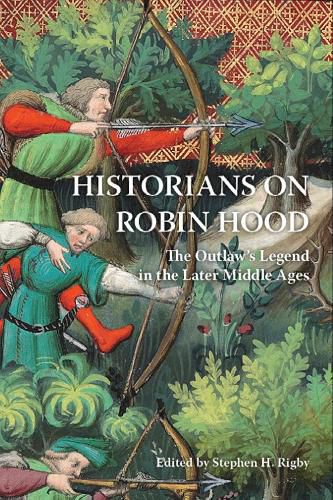Readings Newsletter
Become a Readings Member to make your shopping experience even easier.
Sign in or sign up for free!
You’re not far away from qualifying for FREE standard shipping within Australia
You’ve qualified for FREE standard shipping within Australia
The cart is loading…






Offers a comprehensive thematic introduction to a wide range of medieval writings about the outlaw-hero from a series of different historical perspectives.
By the fifteenth century, churchmen were complaining that laypeople preferred to hear stories about Robin Hood rather than to listen to the word of God. But what was the attraction of this outlaw for contemporary audiences?
The essays collected here seek to examine the outlaw's legend in relation to late medieval society, politics and piety. They set out the different types of evidence which give us access to representations of Robin and his men in the pre-Reformation period, ask whether stories about the outlaw had any basis in reality and explore the many different purposes for which his legend was adapted.
The volume is divided into six parts: the sources for the medieval legend of Robin Hood and its origins; social structure; social conflict; kingship, law and warfare; piety and the church; and the outlaw's legend in Wales and Scotland. Key issues addressed by its essays include the dating of the surviving tales, attitudes to social hierarchy, representations of gender and masculinity, the extent to which the tales drew upon or shaped contemporary attitudes towards law and justice, the development of Robin Hood plays and games, and whether the legend emerged from or appealed to particular social groups. It not only sheds new light on a character who, whether "real" or not, is one of the most important and memorable figures in the history of medieval England but also explores the extent to which the outlaw became popular in Scotland and Wales.
$9.00 standard shipping within Australia
FREE standard shipping within Australia for orders over $100.00
Express & International shipping calculated at checkout
Offers a comprehensive thematic introduction to a wide range of medieval writings about the outlaw-hero from a series of different historical perspectives.
By the fifteenth century, churchmen were complaining that laypeople preferred to hear stories about Robin Hood rather than to listen to the word of God. But what was the attraction of this outlaw for contemporary audiences?
The essays collected here seek to examine the outlaw's legend in relation to late medieval society, politics and piety. They set out the different types of evidence which give us access to representations of Robin and his men in the pre-Reformation period, ask whether stories about the outlaw had any basis in reality and explore the many different purposes for which his legend was adapted.
The volume is divided into six parts: the sources for the medieval legend of Robin Hood and its origins; social structure; social conflict; kingship, law and warfare; piety and the church; and the outlaw's legend in Wales and Scotland. Key issues addressed by its essays include the dating of the surviving tales, attitudes to social hierarchy, representations of gender and masculinity, the extent to which the tales drew upon or shaped contemporary attitudes towards law and justice, the development of Robin Hood plays and games, and whether the legend emerged from or appealed to particular social groups. It not only sheds new light on a character who, whether "real" or not, is one of the most important and memorable figures in the history of medieval England but also explores the extent to which the outlaw became popular in Scotland and Wales.